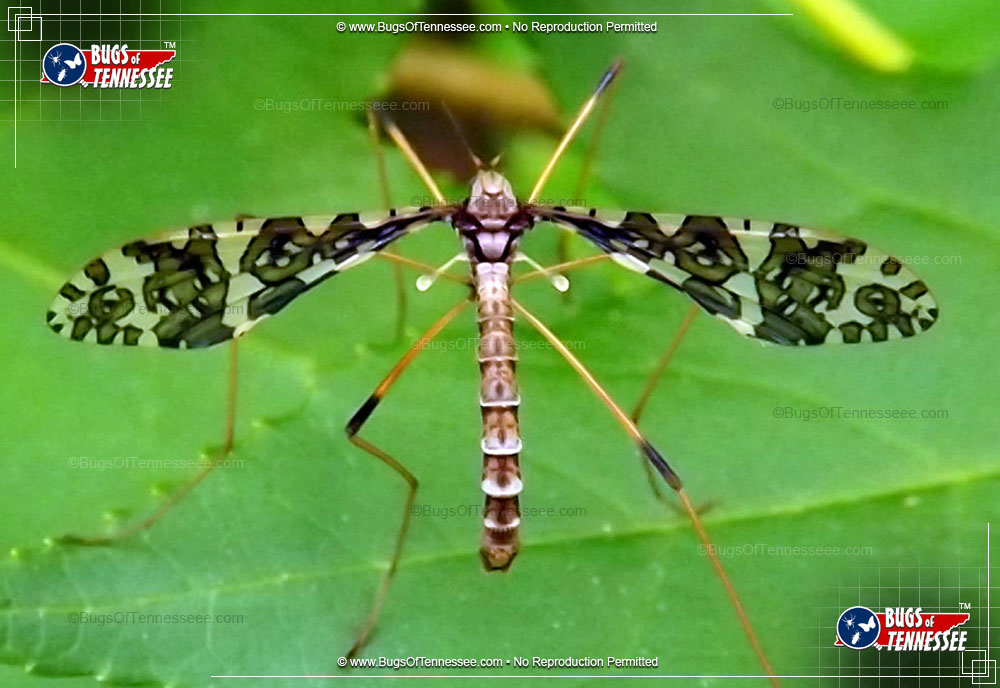Insect Order (Diptera)
DIPTERA
Order Diptera encompasses about 20,000 species across North America (not including Mexico). These mostly daytime flyers are a common sight during the long summer days across Tennessee on land and near bodies of water. Flies belong to this order and feature sucking mouthparts as well as a second set of full wings - the latter making them excellent flyers. The dreaded mosquito also belongs to the order and females of the species sport blood-sucking mouthparts. Beyond these two, Crane Flies, Gnats, and Bee Flies also belong to the group.
Taxonomy
The Taxonomic Breakdown is the scientific way to categorize a partocular insect species from its largest group (Animalia) to its smallest (variable). The Genus and Species categorizations taken together make up the species' scientific name shown above, in this case Epiphragma fasciapenne.
Kingdom: Animalia
Phylum: Arthropoda
Class: Insecta
Order: Diptera
Family: Limoniidae
Genus: Epiphragma
Species: fasciapenne
Characteristics
Nocturnal: Most likely to be spotted during night time hours.
Outdoors: Typically found across the great outdoors.
Six-Legged: Six legs are common to this insect.
Striped / Banded: Noticeable stripes or banding pattern.
Winged: Has wings to hop or fly over distance.
Description
The Band-winged Crane Fly has been identified by site users by the following descriptors:
large winged wings outdoors flying flight brown black gray white pattern stripes, striped six-legged
Sighting Guide
The general likelihood of encountering this insect based on a given month of the year in the state of Tennessee. Generally, the best sighting months are June through August with peak occurring in July.
Size
Below is a representation of the 'smallest-small' and 'largest-large' sizes commonly associated with the Band-winged Crane Fly. Due to monitor differences, sizes may not be exact on your particular screen. Conversions to millimeters are provided for convenience.
Lowest-Low:
1.18 inches
(30 mm)
Highest-High:
1.77 inches
(45 mm)
Identifying Colors
Below you will find the colors most commonly associated with the Band-winged Crane Fly. Both Primary and Secondary colors are represented in the showcase. Due to monitor differences, colors may not be exact representations.
Tennessee County Reach
The Band-winged Crane Fly can be found in the following Tennessee counties:
Anderson; Bedford; Benton; Bledsoe; Blount; Bradley; Campbell; Cannon; Carroll; Carter; Cheatham; Chester; Claiborne; Clay; Cocke; Coffee; Crockett; Cumberland; Davidson; De Kalb; Decatur; Dickson; Dyer; Fayette; Fentress; Franklin; Gibson; Giles; Grainger; Greene; Grundy; Hamblen; Hamilton; Hancock; Hardeman; Hardin; Hawkins; Haywood; Henderson; Henry; Hickman; Houston; Humphreys; Jackson; Jefferson; Johnson; Knox; Lake; Lauderdale; Lawrence; Lewis; Lincoln; Loudon; Macon; Madison; Marion; Marshall; Maury; McMinn; McNairy; Meigs; Monroe; Montgomery; Moore; Morgan; Obion; Overton; Perry; Pickett; Polk; Putnam; Rhea; Roane; Robertson; Rutherford; Scott; Sequatchie; Sevier; Shelby; Smith; Stewart; Sullivan; Sumner; Tipton; Trousdale; Unicoi; Union; Van Buren; Warren; Washington; Wayne; Weakley; White; Williamson; Wilson
Band-winged Crane Fly Picture (1)
1 of 1

Image of an adult Band-winged Crane Fly flying insect at rest.; Credit: Alex B. of Kentucky.
This image is original to
www.InsectIdentification.org; Used with Permission.
